Pat Yanahan's demonstration of new paint-repair technologies, May 2009
Pat Yanahan has been doing paint workshops for many years, and
because this site already contains a report on the one he did in
2008 we would not normally add one for this year's edition. But
this year there is something new. After sticking for years with the
proven but labor- intensive methods that he has shown us in earlier
workshops, Pat has investigated and embraced two new technologies that
can dramatically reduce the amount of time needed to repair paint chips
and scratches.
The first of these is a touch-up paint system named Dr. Paint Chip,
which eliminates the sanding that previously needed to be done after
touch-up paint was applied and allowed to dry. With this product,
instead of sanding you simply wipe the painted surface with a rag soaked
in a special solvent, and the paint (which is also part of the system)
smooths out by itself. Because of the time needed for the paint to dry,
Pat was unable to demonstrate the process in real time. Instead, he and
Tim Curtis did Tim's car with Dr. Paint Chip ahead of time and showed
the results at the workshop. The car came out looking great, and Tim is
a very happy customer.
The second new technology is the orbital-action power polisher, which
combines speed with safe treatment of the paint. The orbital action
prevents the kind of repeated and concentrated rubbing that can cause a
rotary polisher to create swirl marks or even burn through the paint
when used by an amateur. Pat demonstated the Porter Cable 7424, using
it to rub out half of the front hood of an audience member's 911 in
about 5 minutes. When asked how long the job would have taken if done
by hand, Pat said, "About two hours."
In addition to showing us these new products and techniques at the
workshop, Pat has put all this information, including links to the web
sites of suppliers, into a technical article,
"High Tech for Old Porsches," that is posted on this site.
 For several days before the workshop, Pat worked with Tim Curtis on refurbishing the
paint on Tim's SC Coupe. The job included power-polishing the front bumper.
For several days before the workshop, Pat worked with Tim Curtis on refurbishing the
paint on Tim's SC Coupe. The job included power-polishing the front bumper.
photo by Tim Curtis
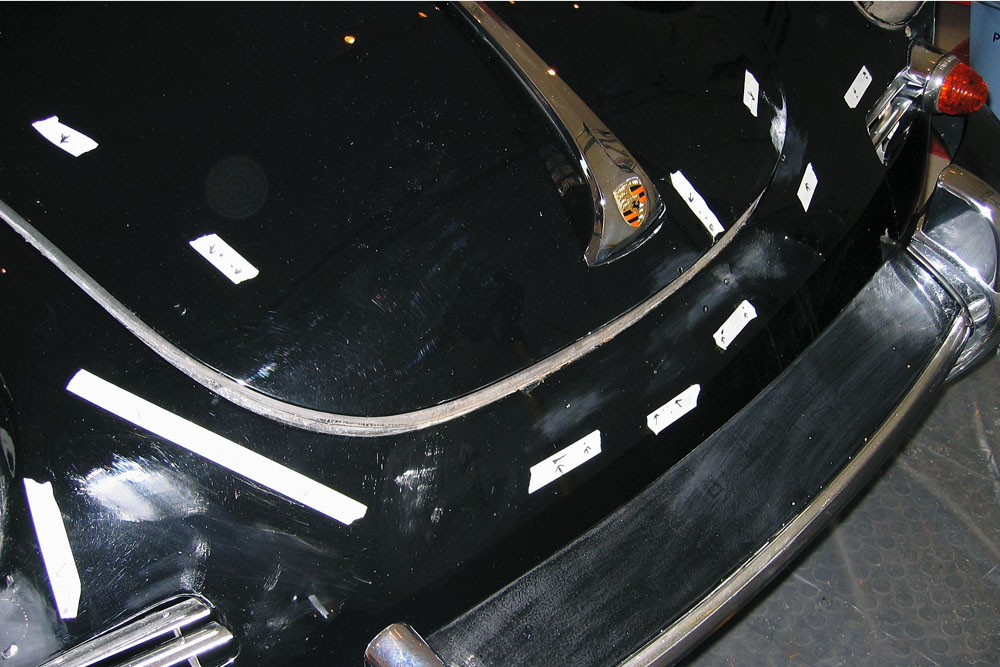 It is important to mark with tape the location of each chip that is going to be repaired. Otherwise it
will be very difficult to find them for later steps in the process after the touch-up paint has been applied.
It is important to mark with tape the location of each chip that is going to be repaired. Otherwise it
will be very difficult to find them for later steps in the process after the touch-up paint has been applied.
photo by Tim Curtis
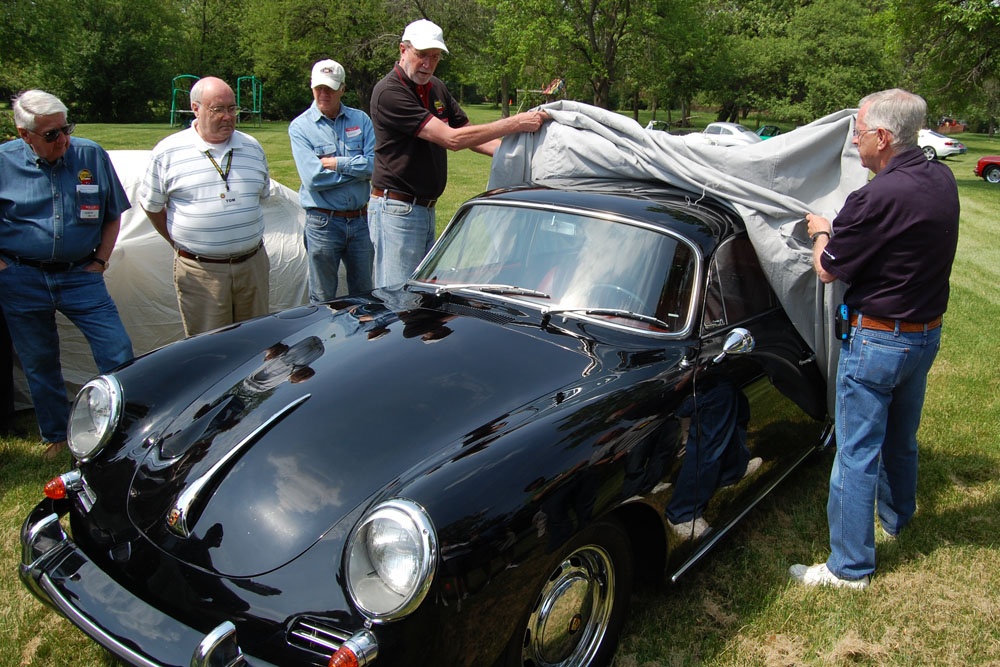 At the workshop, Tim and Pat unveiled Tim's car. The improvement was truly breathtaking.
At the workshop, Tim and Pat unveiled Tim's car. The improvement was truly breathtaking.
photo by Jim Hinde
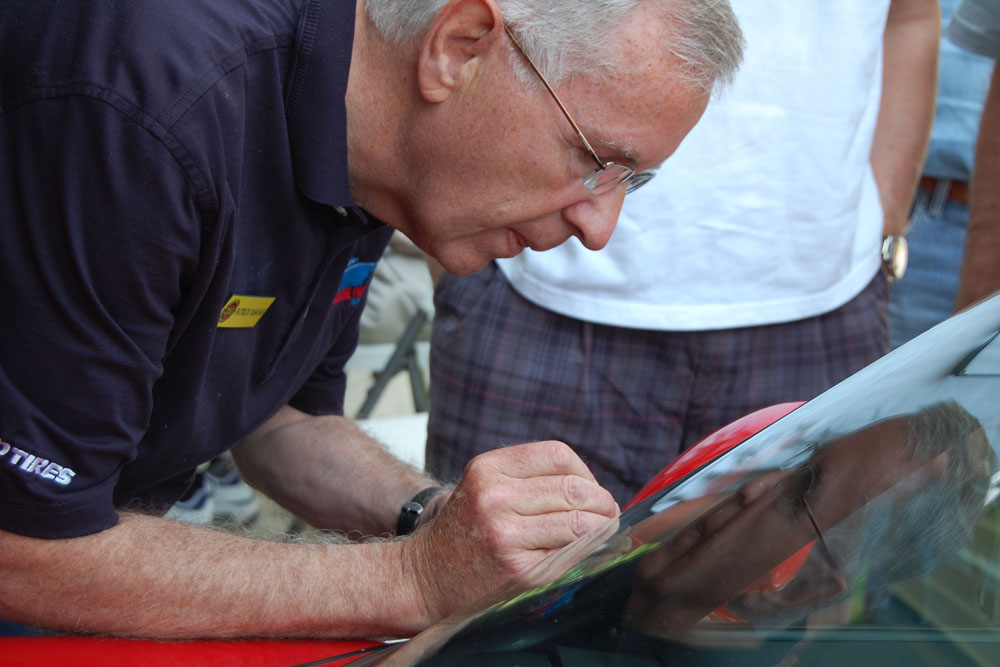 Just to give us a look at how it's done, Pat did tackle a couple of chips during the session.
Here, he applies touch-up paint to a 911 A pillar.
Just to give us a look at how it's done, Pat did tackle a couple of chips during the session.
Here, he applies touch-up paint to a 911 A pillar.
photo by Jim Hinde
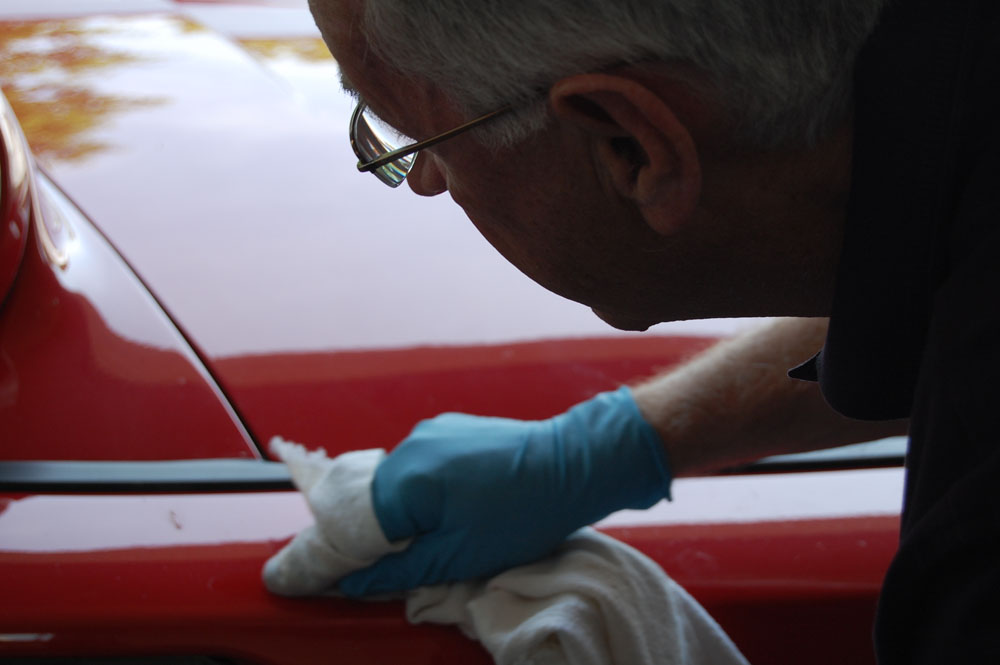 Pat demonstrates how the Dr. Paint Chip solvent is used to "chemically sand" a touched-up chip.
Pat demonstrates how the Dr. Paint Chip solvent is used to "chemically sand" a touched-up chip.
photo by Jim Hinde
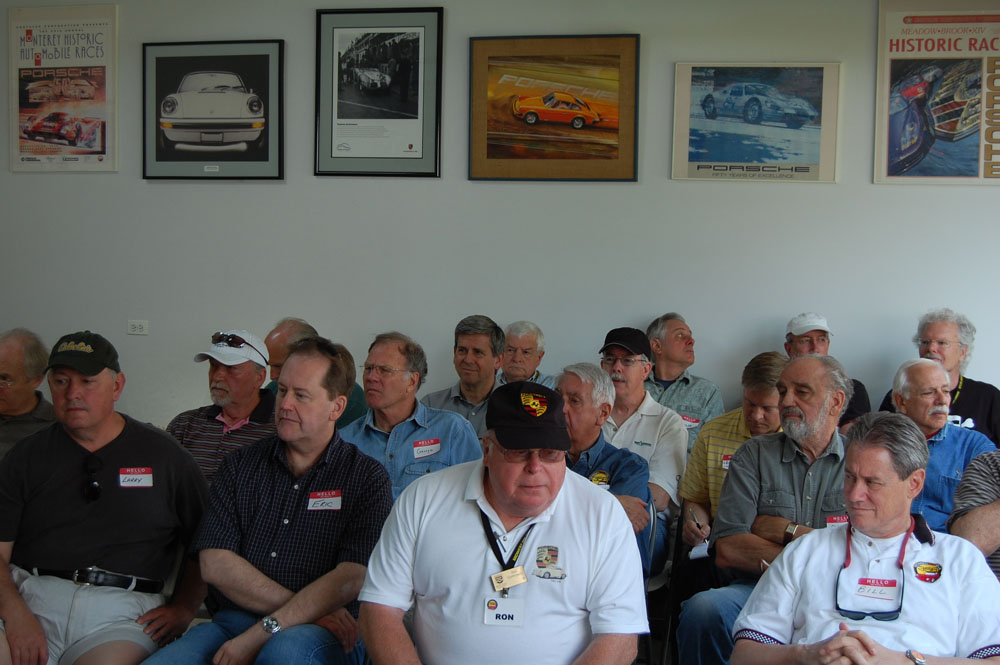 As usual with these workshops, Pat drew a large and attentive audience.
As usual with these workshops, Pat drew a large and attentive audience.
photo by Jim Hinde
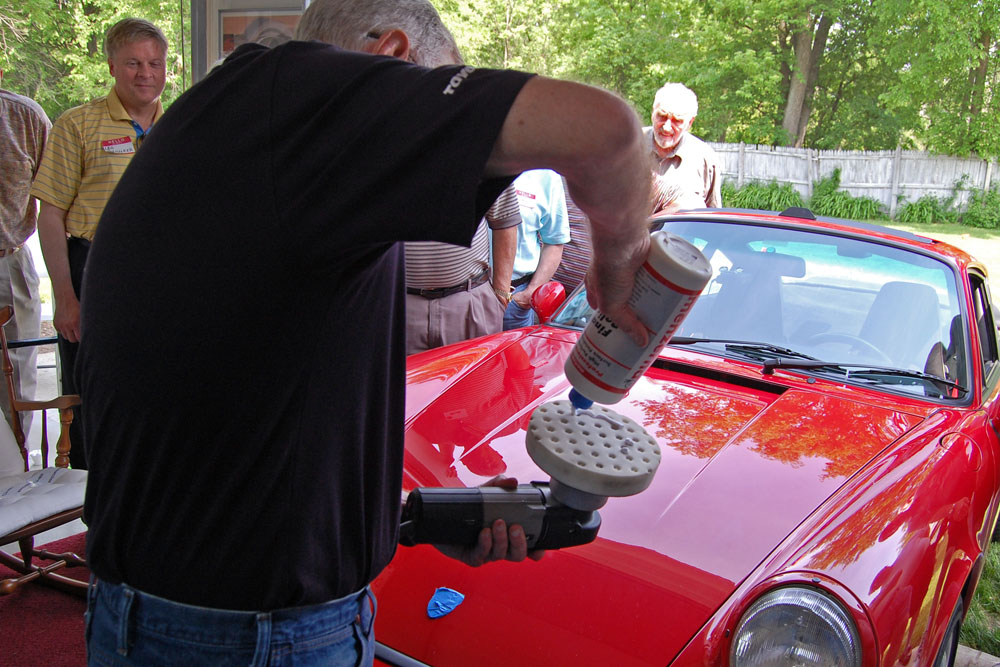 Pat prepares to demonstrate the orbital power polisher on the hood of Bill's 911. The Menzerna polish he
is applying to the pad is part of the kit he recommends in his technical article elsewhere on this web site.
Pat prepares to demonstrate the orbital power polisher on the hood of Bill's 911. The Menzerna polish he
is applying to the pad is part of the kit he recommends in his technical article elsewhere on this web site.
photo by Jim Hinde
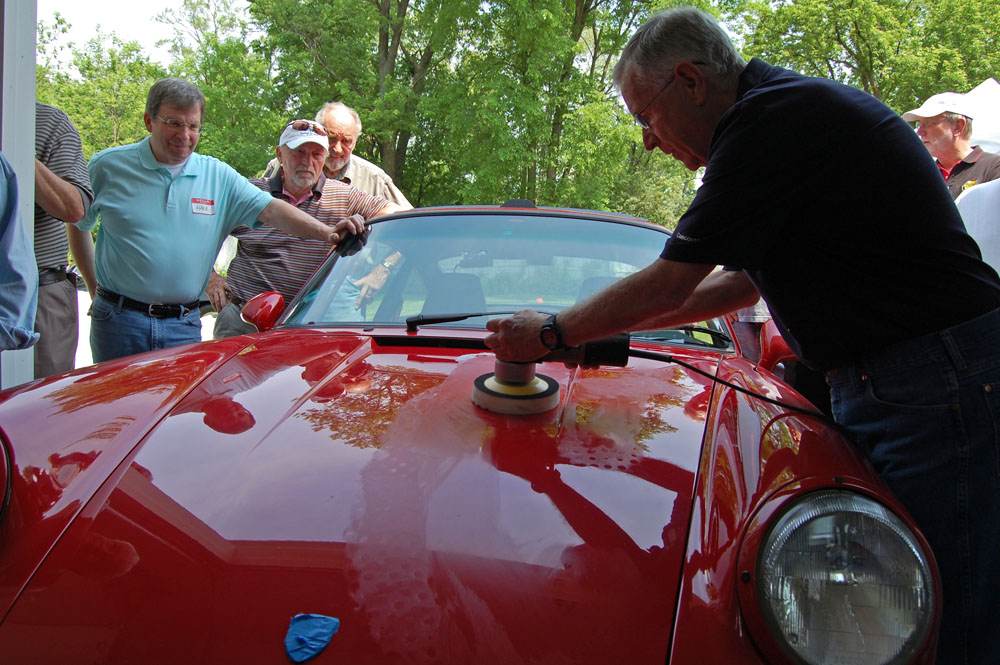 While the orbital action of the polisher mechanism minimizes the risk of burning or swirl marks,
Pat recommends a light touch with the polisher. The tool's own weight is enough to do the job.
While the orbital action of the polisher mechanism minimizes the risk of burning or swirl marks,
Pat recommends a light touch with the polisher. The tool's own weight is enough to do the job.